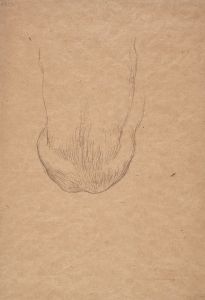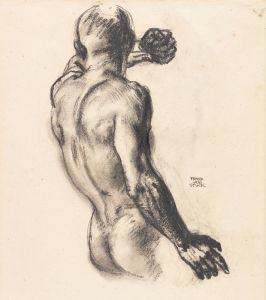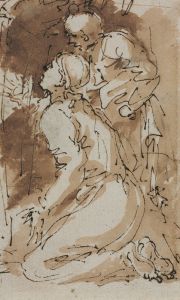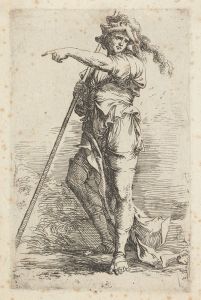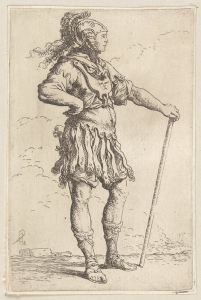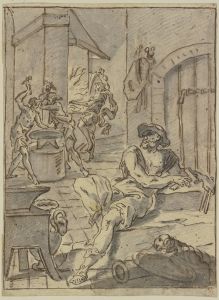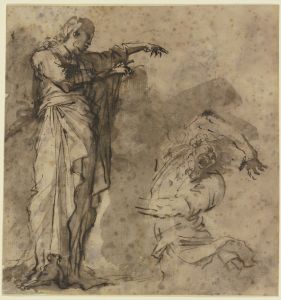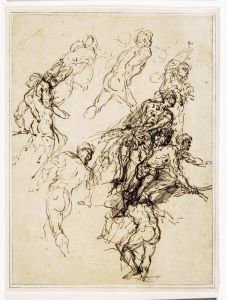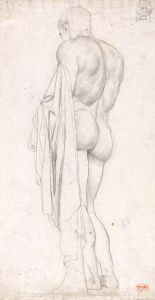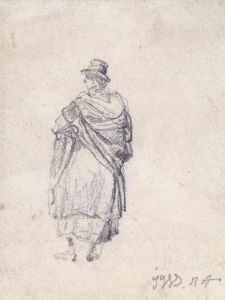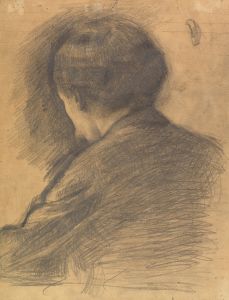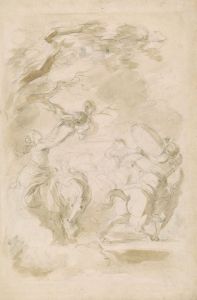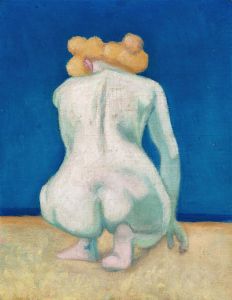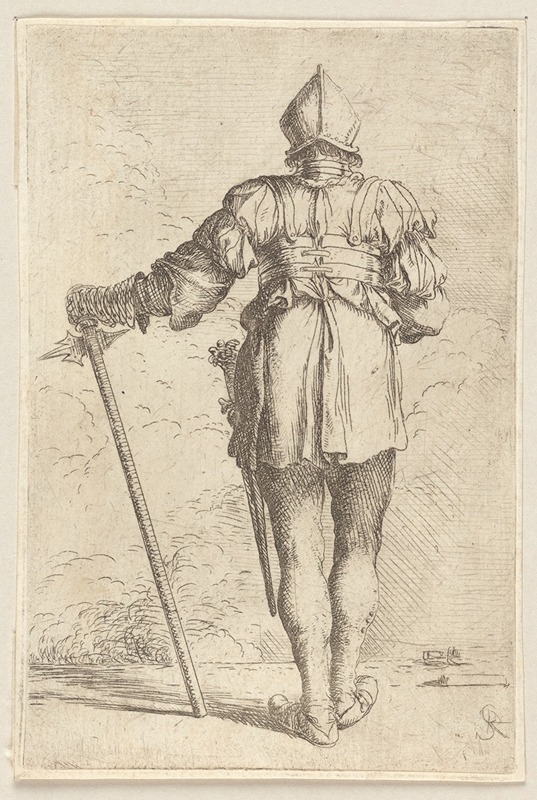
Soldier, Standing, Seen From Behind, in a Helmet, Holding a Cane
A hand-painted replica of Salvator Rosa’s masterpiece Soldier, Standing, Seen From Behind, in a Helmet, Holding a Cane, meticulously crafted by professional artists to capture the true essence of the original. Each piece is created with museum-quality canvas and rare mineral pigments, carefully painted by experienced artists with delicate brushstrokes and rich, layered colors to perfectly recreate the texture of the original artwork. Unlike machine-printed reproductions, this hand-painted version brings the painting to life, infused with the artist’s emotions and skill in every stroke. Whether for personal collection or home decoration, it instantly elevates the artistic atmosphere of any space.
Salvator Rosa was an Italian Baroque painter, poet, and printmaker known for his unorthodox and often dramatic style. Born in 1615 in Arenella, near Naples, Rosa became one of the most original and eccentric artists of the 17th century. His works often depicted wild landscapes, historical scenes, and allegorical subjects, infused with a sense of romanticism and a touch of the sublime.
One of Rosa's lesser-known works is "Soldier, Standing, Seen From Behind, in a Helmet, Holding a Cane." This piece is a drawing rather than a painting and showcases Rosa's skill in capturing the human form with minimalistic yet expressive lines. The drawing features a soldier viewed from behind, wearing a helmet and holding a cane, which suggests a sense of authority or command. The soldier's posture and attire reflect the military themes that were prevalent in Rosa's works, possibly influenced by the tumultuous times in which he lived, including the Thirty Years' War and various conflicts in Italy.
Rosa's drawings are often characterized by their dynamic composition and vigorous line work. In "Soldier, Standing, Seen From Behind, in a Helmet, Holding a Cane," the focus on the back view of the soldier is a testament to Rosa's interest in exploring different perspectives and his ability to convey emotion and narrative through subtle details. The helmet and cane are significant elements, hinting at the soldier's role and status, while the choice to depict him from behind invites viewers to imagine the scene unfolding beyond the frame.
Rosa's work was not only limited to visual arts; he was also a poet and a satirist, often using his art and writings to critique the society and politics of his time. His rebellious spirit and disdain for convention are evident in his choice of subjects and his approach to art-making. Rosa was known to have a circle of intellectuals and artists who shared his views, and he often incorporated philosophical and allegorical themes into his works.
The drawing "Soldier, Standing, Seen From Behind, in a Helmet, Holding a Cane" is a fine example of Rosa's ability to blend realism with a sense of drama and narrative. It reflects his interest in the human condition and the complexities of identity and power. While not as famous as some of his larger paintings, this drawing offers insight into Rosa's artistic process and his skill in capturing the essence of his subjects with economy and precision.
Salvator Rosa's legacy is that of an artist who defied the norms of his time, paving the way for future generations to explore art beyond traditional boundaries. His works continue to be studied and admired for their boldness, innovation, and the unique perspective they offer on the world of the Baroque era.





